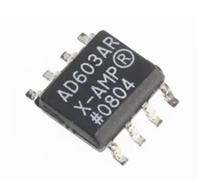| 生命周期: | Obsolete | 零件包装代码: | SOIC |
| 包装说明: | SOP, | 针数: | 20 |
| Reach Compliance Code: | unknown | HTS代码: | 8542.39.00.01 |
| 风险等级: | 5.82 | Is Samacsys: | N |
| JESD-30 代码: | R-PDSO-G20 | 长度: | 12.905 mm |
| 功能数量: | 1 | 端子数量: | 20 |
| 最高工作温度: | 85 °C | 最低工作温度: | -40 °C |
| 封装主体材料: | PLASTIC/EPOXY | 封装代码: | SOP |
| 封装形状: | RECTANGULAR | 封装形式: | SMALL OUTLINE |
| 认证状态: | Not Qualified | 座面最大高度: | 2.85 mm |
| 最大压摆率: | 10 mA | 标称供电电压: | 5 V |
| 表面贴装: | YES | 技术: | CMOS |
| 电信集成电路类型: | DTMF SIGNALING CIRCUIT | 温度等级: | INDUSTRIAL |
| 端子形式: | GULL WING | 端子节距: | 1.27 mm |
| 端子位置: | DUAL | 宽度: | 7.635 mm |
| Base Number Matches: | 1 |
| 型号 | 品牌 | 描述 | 获取价格 | 数据表 |
| CM8888-2CI | CALMIRCO | DTMF Signaling Circuit, CDIP20, CERAMIC, DIP-20 |
获取价格 |

|
| CM8888-2DI | CALMIRCO | DTMF Signaling Circuit, CDIP20, CERDIP-20 |
获取价格 |

|
| CM8888-2EI | CALMIRCO | DTMF Signaling Circuit, PQCC28, PLASTIC, LCC-28 |
获取价格 |

|
| CM8888-2FI | ETC | Telecommunication IC |
获取价格 |

|
| CM8888-2LI | CALMIRCO | DTMF Signaling Circuit, PQCC28, PLASTIC, LCC-28 |
获取价格 |

|
| CM8888-2PI | ETC | Telecommunication IC |
获取价格 |

|
| CM8888-2SI | CALMIRCO | DTMF Signaling Circuit, CMOS, PDSO20, SOIC-20 |
获取价格 |

|
| CM8888-3C | CALMIRCO | DTMF Signaling Circuit, CDIP20, CERAMIC, DIP-20 |
获取价格 |

|
| CM8888-3F | CALMIRCO | DTMF Signaling Circuit, PDSO20, EIAJ, SSOP-20 |
获取价格 |

|
| CM8888-3P | CALMIRCO | DTMF Signaling Circuit, PDIP20, PLASTIC, DIP-20 |
获取价格 |

|
 探究MOS管沟道夹断后载流子传输机制及其电路设计影响
探究MOS管沟道夹断后载流子传输机制及其电路设计影响

 光敏电阻的工作原理、作用及检测方法
光敏电阻的工作原理、作用及检测方法

 ENC28J60以太网控制器全面解析:特性、应用、引脚说明
ENC28J60以太网控制器全面解析:特性、应用、引脚说明

 AD603资料手册解读:封装、引脚功能及电气参数全面分析
AD603资料手册解读:封装、引脚功能及电气参数全面分析
